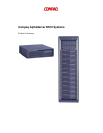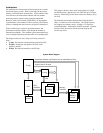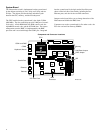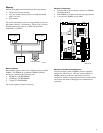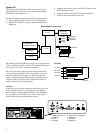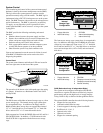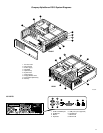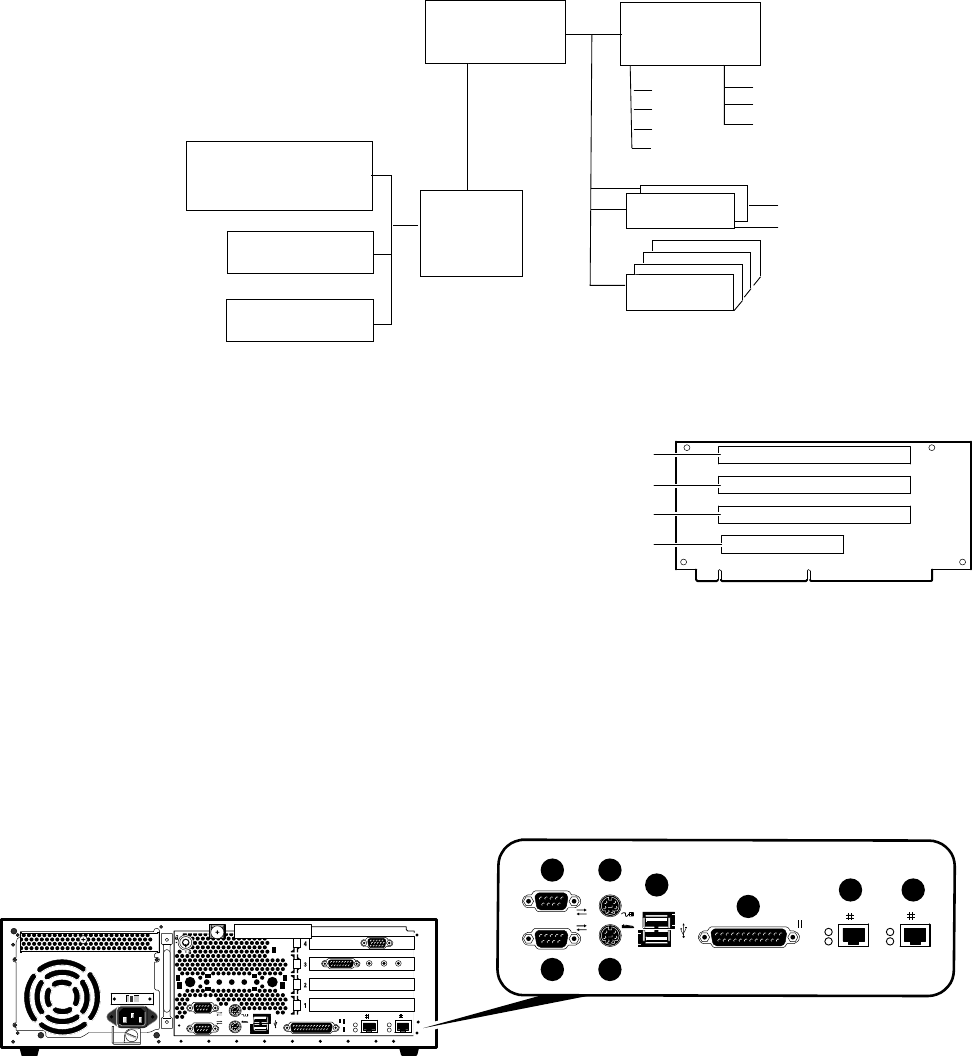
6
System I/O
The industry-standard PCI bus is the number one choice for
high-performance I/O options, such as disk storage and high-
performance video applications.
The PCI bus implementation has the following characteristics:
• Fully compliant with the PCI Version 2.1 Specification
• Operates at 31 MHz, delivering a peak bandwidth of 250
Mbytes/sec.
• Supports three address spaces: PCI I/O, PCI memory, and
PCI configuration space
• Supports byte/word, tri-byte, and longword operations
• Exists in noncached address space only
Block Diagram of I/O Control
PK-0319B-99
P-chip
Flash ROM
Interrupts
Acer Labs
1543C Chip
Config
(NVRAM functions)
Keyboard
Mouse
CD-ROM
COM1
COM2
Printer
Floppy
C-chip
Tulip 21143
Ethernet
PCI Slot
The industry-standard PCI I/O bus allows you to use inexpensive,
widely available I/O options. Both 32-bit and 64-bit PCI options
can be used; 3.3V and 5V options are supported.
The Acer Labs 1543C chip provides the bridge from the PCI
to lower level bus functions. The C-chip controls accesses to
memory on behalf of the P-chip. Two Tulip chips provide
control for the two integrated Ethernet ports. On the PCI riser
card are four PCI slots; three 64-bit slots and one 32-bit slot,
which can be used for a video controller.
PCI Slots
64 Bit
64 Bit
64 Bit
32 Bit
PCI Slot 4
PCI Slot 3
PCI Slot 2
PCI Slot 1
PK1045-99
I/O Ports
At the rear of the system are connectors offering access to two
serial communication ports, one parallel port, two Ethernet
ports, and ports for the keyboard and mouse. (The USB ports
are not supported.) The COM1 port is used for the system
console and for the remote management console.
PK0334A-99
1
2
A
B
1. COM1 and RMC port
2. COM2 port
3. Mouse
4. Keyboard
5. USB ports (not supported)
6. Parallel port
7. Ethernet A
8. Ethernet B
3
5
6
7 8
2 4
1



